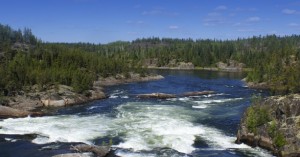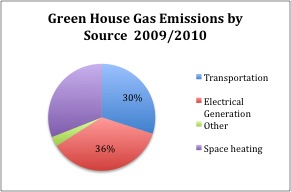Alternative Energy in the North
Is there an Alternative Energy Solution for our Northern Communities?
Course Introduction:
We have been learning about climate change. “Global climate change is predicted to have an ever-increasing impact on the north. It is important for the GNWT to provide support for residents and communities to reduce energy consumption and use local, renewable energy sources when possible” (NWT Energy Final Report, 2011). In the North the main contributor to Greenhouse Gas (GHG) emissions is from diesel-powered generators in all the communities that provide electricity. Diesel is the only source of power in Nunavut, the main one in Yukon. In the NWT Diesel accounts for 50% of electricity generation, hydro is at 32%.
“The NWT accounts for a very small portion (less than 0.2 percent) of Canada’s total annual GHG emissions. While this is not much in relative terms, on a per-capita basis the total emissions from all activities in the NWT equal over 27.9 tonnes of emissions per person per year for 2009/10, down from 40 tonnes per person in 2001/02. This is higher than the national average of 21.7 tonnes per person per year. Higher per capita emissions in the NWT can be attributed to long distances between communities, an energy intensive resource industry and long, cold winters.” (NWT Energy Final Report 2011, p.8). Northern governments and the federal government are all keen to reduce the current dependence on diesel-sourced power. When power plants burn diesel to create electricity, it is not only costly, but also produces massive amounts of greenhouse gases. As you can see below, heating houses and buildings (part diesel, part electricity) also produces a lot of GHGs, about 31%.
Course Outline:
A number of NWT communities are looking at local hydro installations, solar and wind power as alternatives to the current use of diesel fuel for generating electricity. Over several classes you will evaluate the positives and negatives of local hydro, wind, and solar energies as renewable alternatives to using diesel fuel. In your group, you will create a multi-media presentation to summarize your findings, and present your recommendations (and reasons!) to the community to help them make an informed decision.
Course Objectives:
1) Understand and explain the three main alternative /renewable methods of power generation in the north.
2) Develop criteria to evaluate each method in context of community needs, global warming issues, greenhouse gas emissions, and sustainability, compared to conventional diesel generation.
3) Collaboratively evaluate the best alternative and create a community presentation with your group’s recommendations.
Assessment:
20% on group process and discussion forum participation; 15% peer/self assessment; 25% group task 1; 40% multi-media presentation to community. Please consult the rubrics below for criteria on participation and projects. At the end of Activity #2 please print out and fill in the GROUP PROCESS & PARTICIPATION RUBRIC and email to the instructor.
- GROUP PROCESS & PARTICIPATION
- MEDIA PRESENTATION RUBRIC
Research question: Given that your community is now looking into using alternative, renewable energy sources to replace the old diesel generator, what would you recommend to your community as the best alternative? What are your reasons?
In the Introductory Activity you will be introducing yourselves to fellow students in the online class. You will watch two short videos about alternative energy in the context of global warming issues, and talk briefly about how the issues identified in the videos relate to your own community situation.
You can navigate around the course using the links at the top of the pages, and also by following links in the pages.
GO to the GROUP ACTIVITIES Page and begin the Introductory Activity.


